How to reach here:
By Air: Jamnagar has a major airport that is located at a distance of ten kilometers from the main city. This airport caters to domestic flights, and regular flights will be available to the city of Mumbai.
By Rail: Jamnagar Railway station is a major station and is easily connected to all the major cities of India.
Best time to visit: October to March
Languages spoken: Gujarati, Hindi and English.
Must eat: Gathiya, Pakwan,Jotta Bread,Daal Puri,Dry Fruit Kachoris,Mesub and Paan.
Famous Restaurants: Flavors Restaurant, Hotel Aram Restaurant.
Places you must visit:
The Solarium at Jamnagar was built under the patronage of Jam Shri Ranjitsinghji, who brought a professional architect from France to construct the structure. Thus, the solarium is also known as the Ranjit Institute of Poly-Radio Therapy. It is originally a slowly revolving tower, which provides complete daylong sunlight for treating skin disease. As the other two similar solaria in France were destroyed during World War II, this is probably the sole solarium across the globe and certainly in Asia.

The Marine National Park of Jamnagar is recorded as the first marine sanctuary of India. It consists of an archipelago of 42 islands, renowned for their mangroves and coral reefs. The whole forest is enriched with various marine lives. The visitors can see fin-less porpoises, dolphins, sea turtles and a variety of colourful tropical fish at this place. The site is also a retreat of an array of birds.

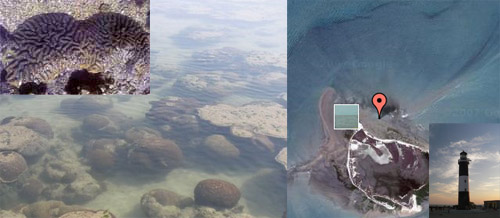
Khijadia Bird Sanctuary represents the combination of seasonal freshwater shallow lake, creeks, saltpans, inter-tidal mudflats, saline land and mangrove scrub. The place is highly recognized as the breeding ground of the great crested grebe. Beside the great crested grebe, it is also a major breeding ground of purple moorhen, little grebe, black-winged stilt, coot and pheasant-tailed Jacana.Raptors including harriers, hawks, falcons and eagle are also found at the place. The sanctuary is also the haven of various migratory birds like swallows, wagtails, martins and various waterfowls. The site is also considered remarkable for ecological research and education.

The ancient royal Darbargadh (maharajah’s palace) is the most significant historical complex in Jamnagar, which manifests the fusion of European and Rajput styles of architecture. It was the royal abode of Jam Sahebs.The semi-circular patterned premise of the palace is built with a number of buildings featuring finest architectural features and detailing. It has some admirable specimens of carved pillars, wall painting, stone carving, jail-screens, fretwork, ornamental mirrors and sculpture. The walls outside, feature carved jarokha balconies designed in Indian tradition, a carved gateway and Venetian-Gothic arches. However, the earthquake that occurred in 2001, has caused intense damage to the Darbargarh.


Lakhota Fort a small palace, which was once owned by the Maharaja of Nawanagar, is located on an island in the heart of the Lakhota Lake. This palace with a fort like appearance has semi-circular bastions, turrets, a pavilion housing guardrooms displaying swords, powder flasks and musket loops. There is an arched stone-bridge, which connects the Lakhota Palace with the town. Presently, it also houses a small museum. This fort museum displays a collection of sculptures belonging to the 9th to 18th century. The museum is accessible by a jetty from the northern side of Ranmal Lake which is a short journey.


This notable Willingdon crescent was constructed under the patronage of Jam Rangit Singh. The structure is comprises of arcades of cu sped arches, larger on the ground floor and smaller on the upper storey. There are pillars supporting the curving walls. The statue of Jam sahib is built in the center of the crescent. However, the earthquake of Gujarat in 2001 has caused a slight damage to this shopping area.


The Pratap Vilas Palace in Jamnagar is a remarkable place, which was built during the reign of His Royal Highness Jam Ranjit Singhji. The palace upholds the blend of Indian carvings and European architecture. It was built with resemblance to the Victoria Memorial Building of Calcutta, but the domes of the palace are built according to Indian architecture.Three domes of the Pratap Vilas Palace are glass made. The carvings of flowers, leaves, creepers, birds and animals on the columns enhance the appeal of the palace. The Gujarat earthquake of 2001 has caused loss of some parapets and also the separation of some upper walls at the roof level of the palace.

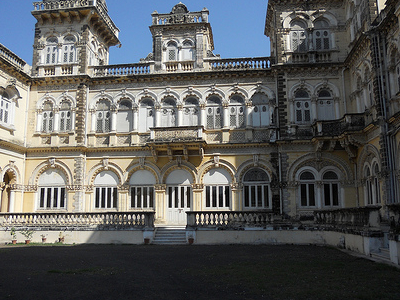
The Kotha Bastion is a treasure of Jamnagar. It houses a fine collection of coins, sculptures, inscriptions copper plates and the skeleton of a whale. One of its most interesting features is an old well; where the water can be bring to the surface by blowing a small hole in the floor.

Dhanvantri Mandir(temple) was constructed under the personal supervision of Dr. Pranjivan Manekchand Mehta, Chief Medical Officer of Guru Govindsingh Hospital. The mandir acquired the status of Ayurveda University after independence. The university houses a library, workshop and is also a major venue for hosting international seminars on Ayurveda, an ancient branch of Indian medicinal system.

Bhujio Kotho enjoys a prominent place amongst the tourists due to its height and structure. It is situated on the bank of the Lakhota Tank, near the Khambhaliya gate. This monument is five-storied and was built for protection during the invasion. The 1st floor houses guns placed in each direction and holes are made in the walls to keep the rifles. A tank has been constructed on the upper floor to store water and on its top, a dancing peacock is placed.


Bohra Hajira is a structure located between Jamnagar and Rajkot on a riverbank. Years back, there were boating facilities in these Rangmati and Nagmati rivers. But presently, the level of the river water is quite low. The river also often dries up and then the Shravana month fair is hosted on the dried up riverbed.

Mota Ashapura Maa Temple is situated in the eastern part of Jamnagar, which marks the gateway to the city and it is also close to Darbargadh in old city area. The temple is dedicated to the Kuldevi of the Jadeja clan of Rajput, who ruled this place.


Shantinath Mandir features intricate carvings and the walls are adorned with fine murals, depicting the life of Jain saints. The floor of the mandir is marble made and colored with distinctive Jain patterns in black, yellow, red and white.

Vardhman Shah’s Temple is an impressive shrine and one of the four main Jain temples of Jamnagar. The foundation stone of the shrine was established in the year 1612, during the rule of Jam Jasagi I, and it was completed by 1620. 52 very small temples built in 1622, encircle the temple.


The Bala Hanuman Temple is remarkable for the incessant 24-hour chanting of the mantra ‘Sri Ram, Jai Ram, Jai Jai Ram’, since August 1, 1964. This dedication has earned Bala Hanuman Temple a position in the Guinness Book of Records. The temple is visited by thousands of worshipers every year.



Cremation Park is famous for its statues of saints and deities and also features scenes from the epic Ramayana. The circle of life depicting the various stages in man’s life is also thought evoking.


Rozi Port nestled on the shore of Gulf of Kutch and Bedi Port on the Rangamati River, are the two major ports located close to Jamnagar. These are also marked as impressive waterside picnic spots offering excellent facilities for angling and fishing.
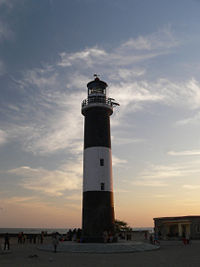
Jogger's Park is a newly built botanical garden in the city, located adjacent to the Palace Ground. The original name of the park is Gulab Kunvarbaa Udhyan. It is highly utilized by the regular joggers and walkers of the city.


Harshidhi Temple is dedicated to Harsidhi Mataji in nestled at the top and bottom of the Koyla Hill. The temple built on the top of the Koyla Hill is the ancient one, which resembles the construction pattern of the Navlakha Temple of the Chalukya Dynasty in Ghumali. However, the temple at the foothill is quite modern-built. Harsidhi Mataji is also called by the name of Ambica Mataji and Kalki Mataji. The local folk call her by the name of Harshad Mata.

Kileshwar is an ancient Shiva temple. It is believed that the Pandavas took shelter at this place during their “Vanavas” (exile) period.
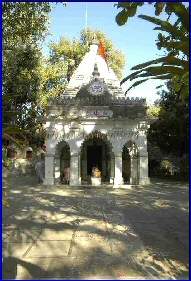
Pirotan Island is covered with marine trees and dense mangrove forest. The entire forest and island is enriched with exotic marine creatures, wild life and sea animals. Tourists can find varieties of crabs in the region like Neptune crab, wolf crab, king crab, hermit crabs, ghost crabs etc.A few exotic species like scorpions, squid, wiper-isosceles, sea snakes, sea bonellia, sea warm sabella, coaster Cather and sea slugs are also found in plenty in this mangrove forest. Various types of corals like moon coral, star coral, brain coral and finger coral etc, are also spotted.Certain species of fishes like puffer fish, ray fish, lobster fish, brittle star, coral fish, pistol shrimp etc. with more than 250 species are also found here. The forest is also a heaven for bird watchers, as the forest offers shelter to flamingo, cranes, sea gull, haring gull, blackhead gull, crab plover gull, puffin and many other birds.
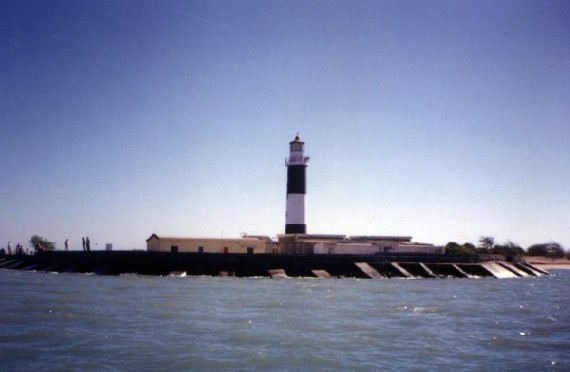

Bet Dwarka was also known by the name of Bet Shankhodar, which was a major port before the development of Okha Port. It was the abode of Lord Krishnas Queens. In the temple of the Bet, the deities of the queen such as Lakshmiji, Radhaji, Jambuvantiji and Satyabhamaji are mainly found here.On the island, there are 20 Vaishnav Temples, 23 Shivalayas, 9 Hanuman Temples, 6 Devi temples and many other temples. It is believed that the Old Shankhnarayan temple was built around V.S 1774. Shrimad Vallabhacharyaji in V.S 1535 established the Mahaprabhuji Baithak here. Bet Dwarka is located at a distance of 3 km from Okha Port by sea.
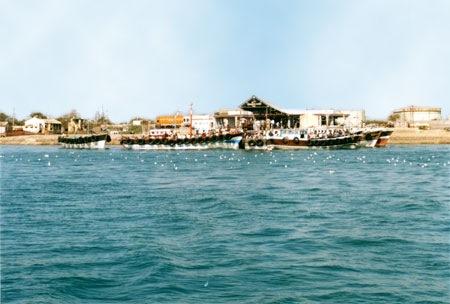




Rukhmini Temple

Nageshwar Mahadev Temple
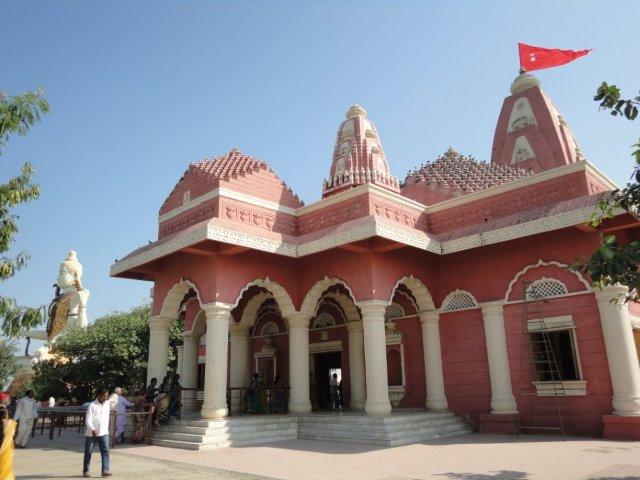
Big Deity of Lord Shiva outside Nageshwar Mahadev Temple

A great deal of remarkable article allocated by you. I am sure that this write-up might turn out to be beneficial for a greater part of your audience. Keep up with this commendable work.
ReplyDeleteEnglish practice App | English speaking app